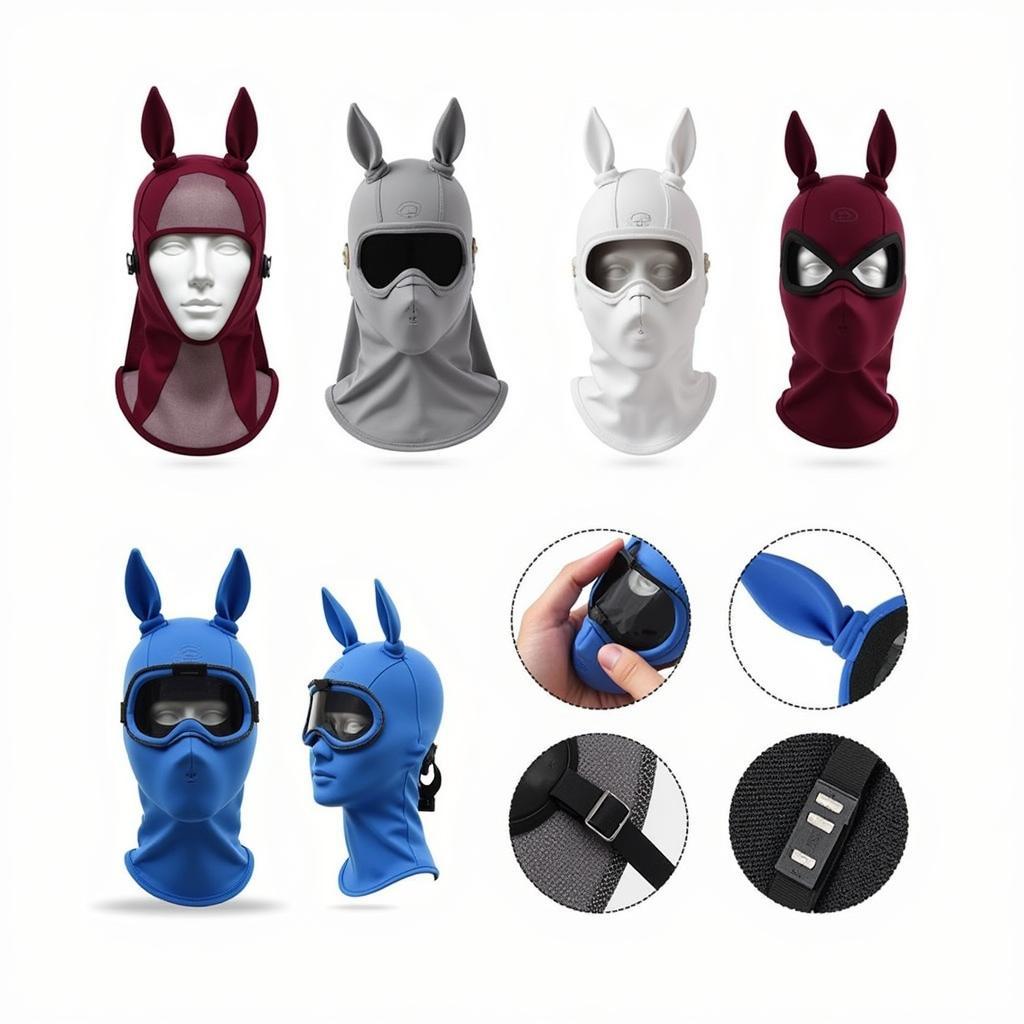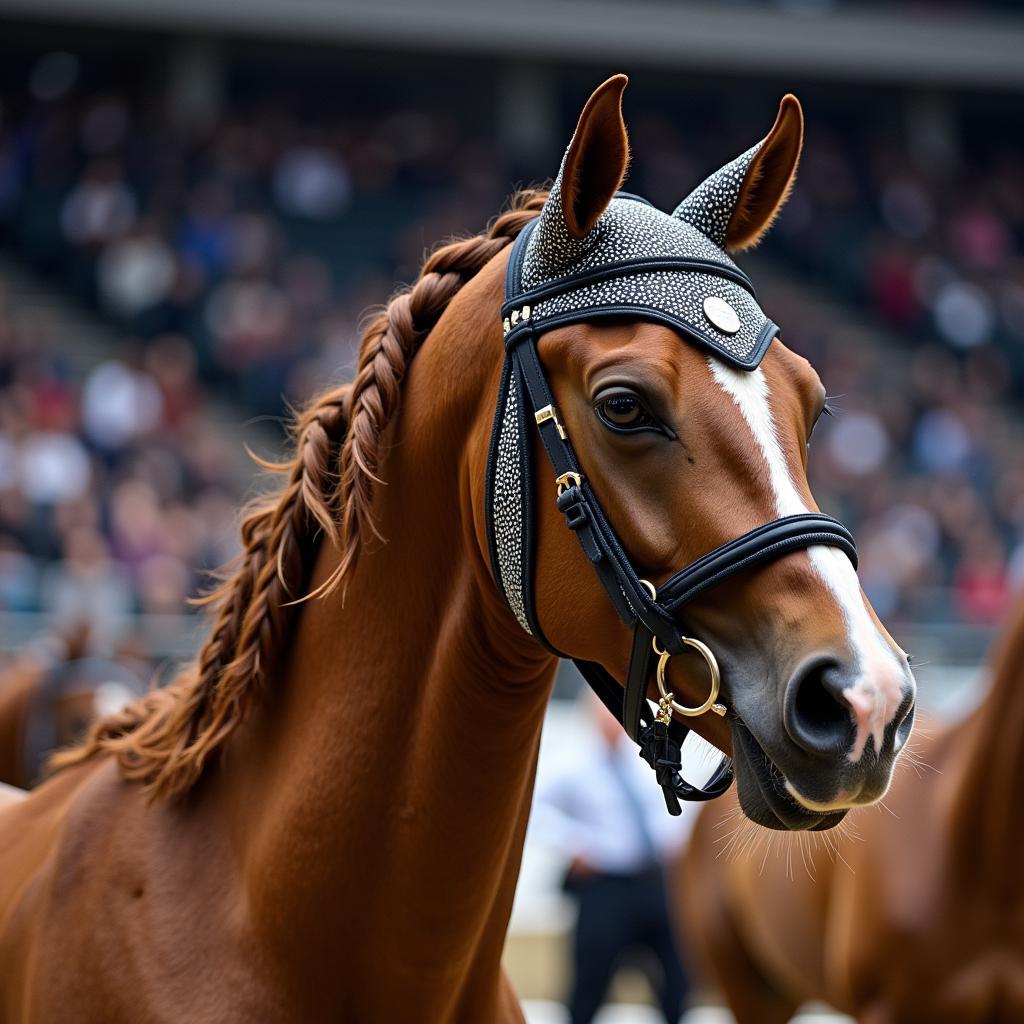Horse Caps are an essential piece of equipment for many horse owners. They provide protection from the elements, help keep flies and other insects away, and can even aid in reducing stress during travel or training. This comprehensive guide will explore everything you need to know about horse caps, from the different types available to how to choose the right one for your equine partner. Let’s dive in!
Types of Horse Caps and Their Uses
Choosing the right horse cap depends heavily on its intended purpose. There are various types available, each designed with specific functionalities in mind. Fly masks are designed to protect your horse’s sensitive face from irritating insects, while ear bonnets offer protection from cold weather and noise. Some specialized horse cap options are designed for use during trailering, offering additional padding and protection during transport. For equestrians competing in various disciplines, show bonnets add a touch of elegance and formality to their horse’s appearance.
Fly Masks: Keeping Pests at Bay
Fly masks are a must-have for many horse owners, especially during the warmer months. They shield your horse’s eyes and sensitive facial skin from flies, gnats, and other biting insects. This protection not only keeps your horse comfortable but also prevents infections and irritations that can arise from insect bites. Choosing a well-fitting fly mask is crucial to ensure maximum effectiveness and prevent any discomfort or rubbing.
 Different Fly Mask Styles for Horses
Different Fly Mask Styles for Horses
Ear Bonnets: Comfort and Noise Reduction
Ear bonnets serve a dual purpose: they protect your horse’s ears from cold weather and minimize distractions from noise. This is particularly beneficial for horses who are sensitive to loud sounds or easily startled. During training, ear bonnets can help improve focus and concentration by reducing external stimuli.
Show Bonnets: Elegance in the Arena
Show bonnets are designed to complement your horse’s appearance in the show ring. They often feature elegant designs and are made from high-quality materials like crochet or fine knit. While they offer some protection from the elements, their primary function is aesthetic. Choosing a show bonnet that coordinates with your riding attire and complements your horse’s conformation can enhance your overall presentation.
 Horse Wearing Show Bonnet in Arena
Horse Wearing Show Bonnet in Arena
Selecting the Right Horse Cap
How do you choose the right horse cap for your horse’s needs? Several factors come into play, including the intended use, the climate, and your horse’s individual preferences. A lightweight, breathable fly mask is ideal for summer, while a heavier, insulated ear bonnet is better suited for winter. Fit is paramount. A poorly fitting horse cap can cause rubbing and discomfort, negating its intended benefits.
Considering Material and Fit
Materials matter when choosing a horse cap. Look for breathable fabrics like mesh for fly masks to prevent overheating. For ear bonnets, fleece or wool linings provide warmth in colder climates. A properly fitted caps horse cap should sit comfortably without being too tight or too loose. It should stay in place without shifting or rubbing against the horse’s skin.
Measuring Your Horse for a Horse Cap
Getting the right fit for your horse cap is essential. You’ll need to take accurate measurements of your horse’s head to determine the correct size. Measure from the poll (the highest point of the head) to the center of the forehead just above the eyes. Then, measure around the horse’s head, just behind the ears and under the throatlatch. These measurements will help you choose the correct size horse cap. You can also check with the manufacturer’s sizing chart for specific instructions.
Caring for Your Horse Caps
Proper care extends the lifespan of your horse caps. Most horse caps are machine washable, but always check the manufacturer’s instructions. Use a mild detergent and avoid using bleach or fabric softeners. Allow the caps to air dry completely before using them again.
Conclusion
Horse caps are valuable tools for protecting your equine companion. By understanding the different types of horse caps available and choosing the right one for your horse’s specific needs, you can enhance their comfort, safety, and well-being. Remember to always prioritize proper fit and care to maximize the effectiveness and lifespan of your horse trailer hub caps. Choosing the appropriate headwear is a simple yet impactful way to show you care.
FAQ
- What are the benefits of using a fly mask on my horse?
- Can I use an ear bonnet on my horse during the summer?
- How do I clean my horse’s show bonnet?
- What should I do if my horse’s horse cap rubs?
- Are there specific horse caps for different disciplines?
- How often should I replace my horse’s fly mask?
- Where can I find horse riding bra?
Common Scenarios and Questions
- Scenario: My horse constantly tries to remove his fly mask. Question: What can I do to prevent this?
- Scenario: My horse sweats excessively under his ear bonnet. Question: What type of material is best for hot weather?
- Scenario: I’m looking for a stylish show bonnet for my next competition. Question: Where can I find a wide selection of show bonnets?
Further Reading
For more information on equine photography, check out our article on a devon horse show photographer.
Contact Us
When you need support please contact Phone Number: 0772127271, Email: [email protected] Or visit us at: QGM2+WX2, Vị Trung, Vị Thuỷ, Hậu Giang, Việt Nam. We have a 24/7 customer service team.